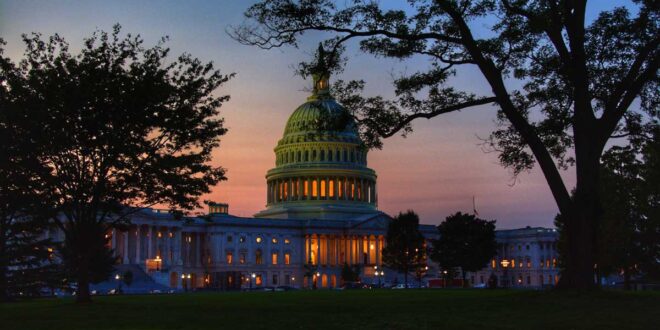No one expected the speakership contest to stretch for 15 rounds before Republican Kevin McCarthy took reins of the House of Representatives. The Democratic supporters rejoiced at the GOP infighting that saw Mr. McCarthy plead his case with his own colleagues over four days of intense struggle to gain the support of 218 newly-elected lawmakers. However, now firmly settled and in control of the House, the Republican roster gears into full swing – from launching investigations into the Biden household to squeezing the Treasury department into subservience. Yet the glaring caveat is the anticipated brinkmanship over raising the federal debt limit.
According to a letter to Congress by Treasury Secretary Janet Yellen, the outstanding debt of the United States is “projected to reach statutory limit” on Thursday, Jan. 19, 2023. The threshold was raised to approximately $31.4 trillion on Dec. 16, 2021 – a measure that allowed the new US government to borrow to meet its fiscal obligations. The United States traditionally runs heavy budget deficits, funding Social Security programs, Medicare benefits, and military salaries, servicing the national debt, and managing tax refunds. Because the cumulative federal spending broadly exceeds the revenue brought in through taxes and other streams, the US government borrows extensively to foot the residual bill.
Historically, the Republicans have attached steep spending cuts and other similar concessions to negotiate over the debt limit. In 2011, the congressional impasse over spending cuts and the debt ceiling was resolved just in time, followed by a brutal stasis that culminated after the then president Barack Obama conceded to the Republican lobby. Yet while the limit was never breached, the mere uncertainty rattled the financial markets. Investor and consumer confidence plummeted; the cost of borrowing for businesses spiraled due to a higher perceived risk of a sovereign default; the stock market plunged. For the first time in its history, the S&P Global Ratings downgradedAmerica’s credit rating. A repeat of that episode – let alone an actual breach of the debt limit – would not only destabilize the already fragile US economy but could also tumble the global bond markets, which significantly bank on US Treasuries as a safe asset class. In September 2021, Moody’s Analytics cautioned that a default on Treasury bonds could throw the US economy into a tailspin “as bad as the Great Recession,” potentially leading to a 4% decline in Gross Domestic Product (GDP) and loss of circa 6 million jobs.
Prominent Republicans have criticized subsequent Democratic regimes over excessive spending and high borrowing cycles. In a discussion on Fox News last week, Mr. McCarthy termed the US debt as “one of the greatest threats” to the American nation, adding, “We don’t want to just have this runaway spending.” Other popular GOP lawmakers, including top Republican Sen. Mitch McConnell, have a notorious history of forcing fiscally conservative policies before voting for an increase to the debt ceiling. However, President Joe Biden has categorically refused to negotiate the debt limit by offering concessions on spending plans. Thus, a ruinous deadlock is all set to hit Congress by mid-April, the tax deadline that would shape a much better picture of the government finances and allow the Biden administration to negotiate from a relatively robust footing.
Nonetheless, the GOP lawmakers realize that the US economy is already on the cusp of a recession; any inane policy tussle could exacerbate the economic woes – making the job harder for the Federal Reserve to control inflation while preventing an extended period of economic pain and unbridled unemployment. Even Ms. Yellen – a fervent advocate of abolishing the borrowing cap altogether – has urged the bipartisan Congress to “act promptly to protect the full faith and credit of the United States,”writing further that “[A] failure to meet government’s obligations would cause irreparable harm to the US economy, the livelihoods of all Americans, and global financial stability.” Meanwhile, the Treasury is gearing up to implement two extraordinary measures to free up some fiscal space for a limited time.
While the congressional elements battle out the policy divide and negotiate the debt limit, the Treasury would (1) redeem existing, and suspend new, investments of the Civil Service Retirement and Disability Fund (CSRDF) and the Postal Service Retiree Health Benefits Fund (Postal Fund), and (2) suspend reinvestment of the Government Securities Investment Fund (G Fund) of the Federal Employees Retirement System Thrift Savings Plan. According to Ms. Yellen, these measures will “reduce the amount of outstanding debt subject to the limit,” allowing breathing space for the federal government to finance its operations till early June. Many economists expect a timely resolution before these emergency measures are exhausted. But a prolonged stalemate could lead to a squeeze in the social safety net and even a default on federal debt. Such extreme moves could lead to a wipeout of “the equivalent of one-tenth of American economic activity,”according to estimates by Goldman Sachs analysts.
While I do endorse fiscal responsibility and debt control policies, it seems like an awfully perilous gamble, especially when the spending plans currently on the table have already been approved by the Congresses of both parties.
 Geostrategic Media Political Commentary, Analysis, Security, Defense
Geostrategic Media Political Commentary, Analysis, Security, Defense





